White Sox draft strategy should deviate from college to prep
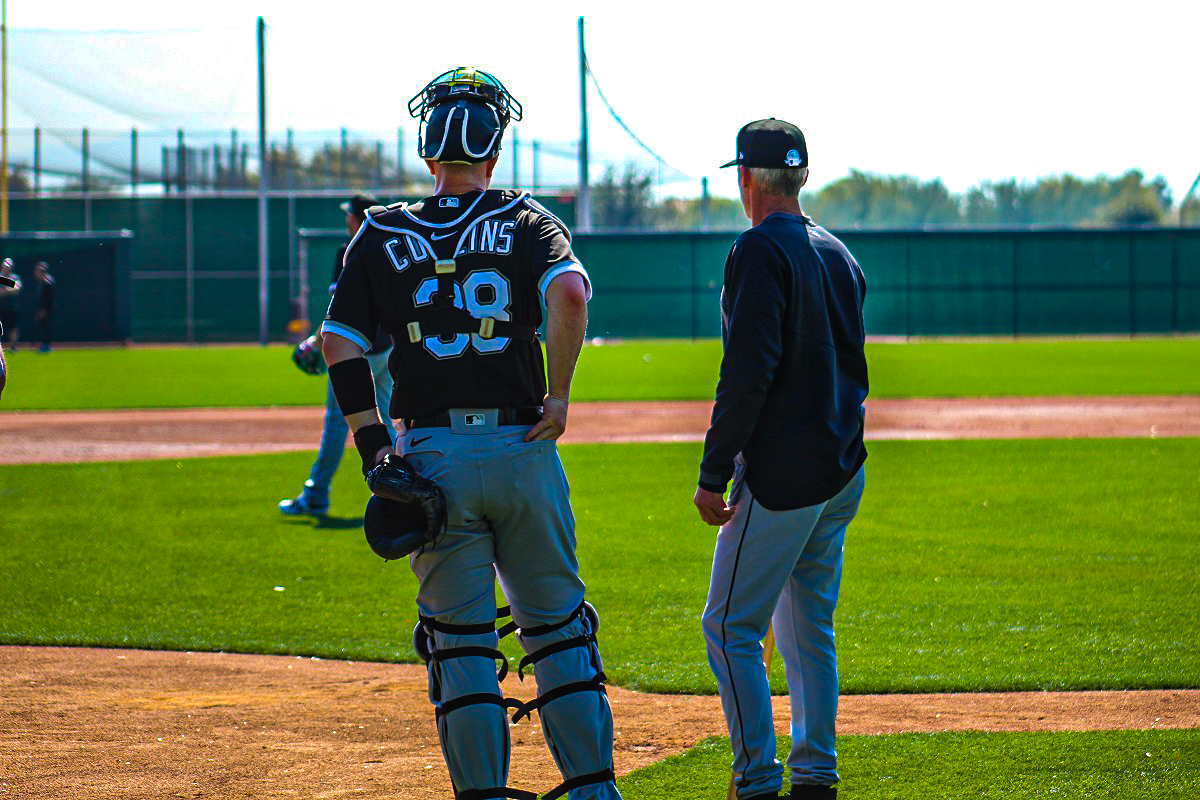
The Chicago White Sox haven’t selected a prep player in the first round since nabbing outfielder Courtney Hawkins out of a Texas high school in 2012. The organization hasn’t taken a high school pitcher since selecting Kris Honel in round one back in 2001. Neither player worked out and it’s understandable why the risk could be seen as not worth the potential reward.
The franchise has taken a college hitter in the first round each of the last four years. Under the direction of Nick Hostetler, the club added Zack Collins (Miami, 2016), Jake Burger (Missouri State, 2017), Nick Madrigal (Oregon State, 2018) and Andrew Vaughn (California, 2019). Before that, college pitchers were more the rage with Carlos Rodon out of North Carolina State in 2014 and Carson Fulmer from Vanderbilt in 2015.
Drafts are often college heavy with hitters rising to the top in most cases. The 2020 draft isn’t expected to be much different with Arizona State’s Spencer Torkelson expected to go with the first selection. Austin Martin of Vanderbilt and Nick Gonzalez of New Mexico State should follow in short order and there are a bevy of college pitchers slated for the top ten as well.
Plenty of analysts think they have the White Sox’s strategy pegged due to their history. When researching and completing a mock draft, it’s easy to send a college bat to Chicago. Despite the prose from the likes of Keith Law at The Athletic, Kiley McDaniel of ESPN, Carlos Collazo of Baseball America and Eric Longenhagen of FanGraphs, the White Sox seem more ready than ever to select a high school player in the first round.
Following The bread crumbs
In the latest mock draft from Jim Callis at MLB Pipeline, he shed some light on a possible strategical shift for the South Siders. While college backstop Patrick Bailey was the pick once again, Callis said that the White Sox are “doing a lot of work on the top high school hitters and pitchers” in this class. First year director of amateur scouting Mike Shirley echoed similar sentiments during a conference call with the local media on Tuesday. Shirley noted that the club has film of college guys dating back years using a shared video service, but it’s a different process for the high school kids.
The exuberant scout stated that, “The high school players have been a little bit different due to the fact that the activity watching them play during the spring has not been there, but we spent so much of our summer on the high school player. For the most part, I want to say about 60-65 percent of the high school players, we did actually see play this spring, especially in the warmer climates of Florida, California and Texas. We did attack those players and we did get some looks at these guys.”
Shirley also confirmed that the club clearly sees some of the prep talent available as potential first round targets while expressing his sorrow over the lost season for many kids.
“I feel terrible for this 2020 baseball class in terms of high school players,” said Shirley, who previously served as the organization’s assistant scouting director. “There’s so many kids who got their season taken away from them and I really feel for that group of players. The best players who took a step forward in the high school class still had a chance to present themselves to us and based off their track record of what they’ve done their junior year in high school, we start evaluating at that point. To watch their offseason workout, to seeing them play in the summer to getting them this spring we do have track record on a lot of these high school guys. We still feel good about this and there are high school players that are clearly in our mix that we’ve been able to evaluate, interview and get to know and show comfort where we have them.”
Baseball America recently updated their mock draft and prospect writer Carlos Collazo provided an interesting nugget in linking the White Sox to California prep catcher Tyler Soderstrom. It’s expected that we see more of this from analysts and writers in the coming days as we get closer to June 10.
FutureSox has learned that the White Sox have participated in numerous Zoom calls over the past few weeks with intriguing high school prospects. It shouldn’t be seen as a surprise despite their recent history indicating a preference for college talent. The organization is in a steady place and the system is ready for another infusion of younger talent after adding eight preps in the 2019 draft.
The fallacy of safe
On the surface, it makes sense to add another college hitter in the first round. There is so much data available on college players and analytics departments across the industry crave large samples. In this particular class though, defaulting to a recent norm because of the perception of safety makes little sense. The college bats at the top of this draft crop would line up in almost any draft class. The next tier of players are a bit more volatile though. Arkansas outfielder Heston Kjerstad, UCLA outfielder Garrett Mitchell and North Carolina State catcher Patrick Bailey are next in line as it pertains to collegiate bats.
Heston Kjerstad is a 21-year-old outfielder from Arkansas that got off to a roaring start this spring. He might have the best left handed power in the 2020 class and his above-average raw power to all fields is a carrying trait. Kjerstad imposes strength and bat speed and was one of the best players with wood bats last summer. He’s a capable defender in an outfield corner, but defense will never be described as a strength. Kjerstad will turn 22 years old next February and our Jasper Roos profiled him more elaborately earlier back in April. In a recent episode of the FutureSox podcast, ESPN college baseball analyst Kyle Peterson evaluated the slugging Razorback for the audience as well.
Switch-hitting backstop Patrick Bailey of North Carolina State is another potential option for the White Sox with the 11th pick. Bailey has been a favorite of analysts when mocking players to Chicago, but it appears that interest has been slightly overblown. Bailey won’t turn 22 years old until next May and he possesses solid raw power from both sides of the plate. He also draws lots of walks and will be popular in the analytics’ department. The Wolfpack star is an athletic backstop that will stay at the position long-term, but his questionable hit tool is a definite issue. Ken Sawilchik also noted his struggles with wood bats with the Collegiate National Team last summer and deficiencies of that sort have kept the organization away recently.
Garrett Mitchell will turn 22 years old in September. The athletic outfielder from UCLA looks the part at 6-foot-3 and 205 pounds. The left-handed hitter missed the wood bat leagues last summer while recovering from injury, but he made serious strides toward improving his swing this spring. Mitchell is big and strong and is a plus runner. He projects to stay in centerfield long-term and should be a threat on the base paths as well. The former California prep standout shows plus power potential in batting practice and he might have the best collection of tools in the entire college class. Mitchell has been playing with Type-1 diabetes and while he has it under control, playing a full professional season would present another challenge.
None of the players mentioned above would be a poor pick for Mike Shirley and the rest of the front office. It would be deemed as “safe” and the White Sox would likely earn plaudits for adding a “quick-to-the-majors college hitter” to an already functioning farm system. It’s just not the best use of resources in 2020 and the high school class of players is preferable when in search of an offensive performer on the positional side.
Overcoming the perception of risk
Outfielders Pete Crow-Armstrong, Austin Hendrick and Robert Hassell along with shortstop Ed Howard and catcher Tyler Soderstrom aren’t perceived to be as “safe” when compared to their collegiate counterparts. The system needs to get younger after a heavy focus on the insulation of the affiliates with college players. Any of these players could be in Mike Shirley’s 15 that were mentioned this week and Crow-Armstrong and Soderstrom were able to suit up some this spring. These five prospects are all different, but they line up favorably next to their collegiate counterparts and they offer more upside while possessing a much larger margin of error.
Crow-Armstrong is a definite centerfielder with a left/left profile and he fits the bill despite not being linked to the White Sox so far in the process. PCA is the latest prospect to come out of historic Harvard-Westlake High School and he’ll be 19 next March. The athletic outfielder makes plenty of loud contact, but there’s also a substantial amount of swing-and-miss to his game. He was off to a hot start this spring. Sean Williams profiled the California prep recently and touched on his prowess as a defender in the outfield.
Austin Hendrick is a left-handed hitting outfielder from West Allegheny High School in Pennsylvania. The 6-foot, 195-pounder has unquestioned raw power that is unlocked with incredibly quick hands and prodigious bat speed. Hendrick profiles in an outfield corner and could be a true middle-of-the-order run producer at his peak. The slugger really struggled with Team USA and in the PDP League and there are definite questions about the swing mechanics. Steve Hasman wrote about Hendrick’s upside recently, but noted that he’s an older prep (turns 19 this month) which always leaves evaluators skeptical.
Robert Hassell turns 19 in August and he holds a pretty strong commitment to play at Vanderbilt next spring. He’s expected to sign, but he does hold some significant leverage. The 6-foot-2, 195-pound outfielder possesses a 60-grade present hit tool and is generally regarded as the top prep hitter in the 2020 class. Hassell hails from Independence, Tenn., and he has a chance to stick in centerfield long-term. There are some questions about the left-handed hitter’s power potential, but he displays a pretty swing from that side of the dish regardless.
Ed Howard is the best prep shortstop in the 2020 class. He’s right in our backyard at Mount Carmel High School and unfortunately wasn’t able to play any games this spring. The 6-foot-2, 185-pounder turns 19 in August and is a potential option for the White Sox. Howard played for Jackie Robinson West during Little League and he’s a member of the White Sox’s ACE Program. The local hero needs to develop more power, but his hit tool is solid and he’ll definitely stay at shortstop. Howard possesses a simple swing and is a plus runner. He battled a shoulder injury and missed some major prep tournaments because of it.
Tyler Soderstrom is an 18-year-old catcher from Turlock, Calif., and he’s one of the best prep hitters in the class. The 6-foot-2, 200-pounder turns 19 in November and put together a very solid summer on the high school circuit. Soderstrom will likely move off catcher, but the bat plays anywhere. It’s a 60-grade hit tool with a 60-arm that should play immediately in the outfield or at third base. He’s a left-handed hitter and could hit in the middle of a lineup down the road. Ken Sawilchik profiled the California prep recently.
Consensus building
The White Sox could go many different directions with the 11th overall pick next Wednesday. Shirley specified that there are currently 15 players in the club’s mix.
“We targeted about 24 players when spring training was still going on and we’ve narrowed that down to about 15 players we do like and we understand that the bulk of that top-end is not going to be available to us,” Shirley told reporters on Tuesday.
Basic math indicates that they should have four-to-five players to choose from.
In looking at possible outcomes, nobody would be surprised if the franchise pounces on a college arm that wasn’t expected to be on the board. That would be an easy decision for the group to make. If the preferred college pitching isn’t an option though, taking a prep hitter makes the most sense. The group of prep hitters are just better values than the expected crop of college hitters that are projected to be available.
While it makes sense in theory to take a college hitter, it doesn’t make as much sense in reality. The system needs to get younger in general and that would point to a prep hitter.
A college hitter could in theory make it to the majors much quicker and help a big league club expected to compete for division titles in short order. Guys like Bailey, Kjerstad and Mitchell wouldn’t have an easy path to a spot regardless. We’ve also seen what happens when college hitters struggle or have setbacks in the minors. Any false step and a college prospect becomes older and much less valuable.
A high school hitter could struggle in the low minors, but the player would still be young enough to rebound and reach impact status. Younger players are also more appealing in trade talks with other clubs and the White Sox would be expected to be active in that department.
With no minor league baseball season likely in 2020, it also makes a “quick-moving” college performer less valuable in the immediate future. Mike Shirley has numerous options to decide on in his first run as scouting director. If he decides to continue the trend of adding hitters to the core though, he should recommend a younger model.
Photo credit: Sean Williams/FutureSox
Want to know right away when we publish a new article? Type your email address in the box on the right-side bar (or at the bottom, if on a mobile device) and click the SUBSCRIBE button. Our list is completely spam free, and you can opt out at any time. Also, consider supporting FutureSox on Patreon! You will get early access to special articles and Patreon-only posts, in addition to more benefits. Shop our exclusive merchandise! Show your support with the latest FutureSox apparel.

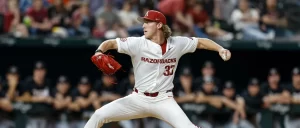
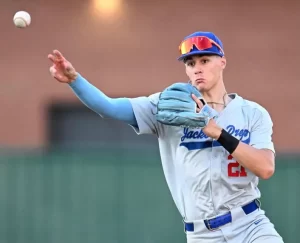
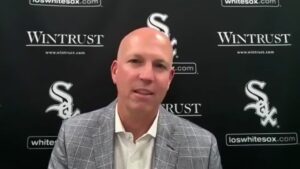


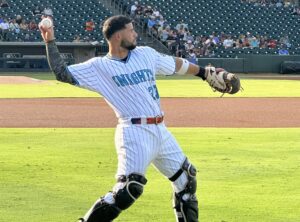

1 thought on “White Sox draft strategy should deviate from college to prep”
Comments are closed.